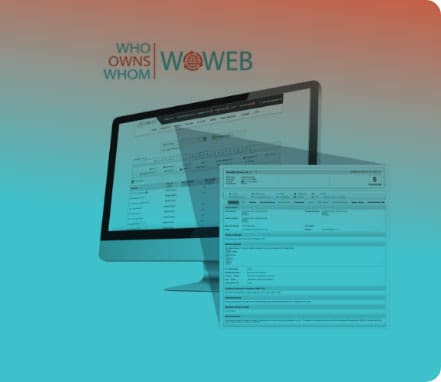Report Coverage
This report focuses on Mining in East Africa and includes descriptions of mineral resources, exploration, production, economic contribution and trade across numerous countries. There are profiles of 44 companies including Canadian company Barrick Gold, which owns a majority interest in three gold mines in Tanzania, and South African AngloGold Ashanti, which owns the Geita mine in Tanzania. Other profiles include Tirupati Graphite, which reached commercial production at one mine and is building and planning numerous processing plants in Madagascar, and EcoGraf, which has graphite projects in Tanzania.
Introduction
The latest World Mineral Production report of the British Geological Survey indicates that in 2018, East Africa supplied 14.7% of the world’s rutile (titanium dioxide), 9.6% of its titanium-iron oxide mineral ilmenite, 4.7% of its zircon, 4.3% of its gold, and 2.2% of its natural sodium carbonate (soda ash). In 2019, East African countries exported minerals worth US$1.0bn, unchanged from 2018, according to the International Trade Centre’s Trade Map. Factors such as the impact of the coronavirus pandemic, low economic growth in major mineral importers and inadequate infrastructure are having an impact on the performance of East Africa’s mining sector.
Strengths
• A number of large mining companies are present.
• An important producer of rutile, ilmenite, gold, sodium carbonate, tantalum and zircon.
• East Africa is an established mining region.
Weaknesses
• Artisanal mining is often associated with smuggling, revenue loss, child labour, human rights abuse, and environmental and human health concerns.
• General lack of skilled employees.
Opportunities
• Many countries are trying to develop their mining sectors.
• Several countries are underexplored.
Threats
• Lack of infrastructure, especially roads and electricity in rural areas.
• Low economic growth in major mineral importers.
• The impact of the coronavirus pandemic on demand for minerals.
Outlook
The latest Resources and Energy Quarterly report forecasts global zinc and copper consumption will be slightly lower in 2020 than in 2019, but higher in 2021 and 2022. Demand for some of East Africa’s major minerals is therefore expected to increase over the next two years, leading to higher production and mining revenues in the region. A few coal, copper, gold, graphite, potash, ilmenite, rutile and zircon deposits in East Africa are expected to be developed into mines over the next few years.
Full Report
R 1 900.00(ZAR) estimated $107.09 (USD)*
Industry Landscape
R 1 330.00(ZAR) estimated $ 74.96 (USD)*
Historical Reports
The Mining Sector in East Africa 2018-12-19
R 1 900.00(ZAR) estimated $107.09 (USD)*
View Report Add to CartThe Mining Sector in East Africa 2015-09-29
R 1 900.00(ZAR) estimated $107.09 (USD)*
View Report Add to CartTable of Contents
[ Close ]| PAGE | ||
|---|---|---|
| 1. | INTRODUCTION | 1 |
| 2. | REGION INFORMATION | 1 |
| 3. | DESCRIPTION OF THE INDUSTRY | 3 |
| 3.1. | Industry Value Chain | 6 |
| 3.2. | Geographic Position | 7 |
| 4. | SIZE OF THE INDUSTRY | 13 |
| 5. | STATE OF THE INDUSTRY | 14 |
| 5.1. | Local | 14 |
| 5.1.1. | Trade | 18 |
| 5.1.2. | Corporate Actions | 21 |
| 5.1.3. | Regulations | 24 |
| 5.2. | Continental | 28 |
| 5.3. | International | 29 |
| 6. | INFLUENCING FACTORS | 30 |
| 6.1. | Coronavirus | 30 |
| 6.2. | Economic Environment | 31 |
| 6.3. | Government Involvement | 31 |
| 6.4. | Lack of Infrastructure | 33 |
| 6.5. | Environmental Concerns | 33 |
| 6.6. | Technology, Research and Development (R&D) and Innovation | 34 |
| 6.7. | Labour Resources | 34 |
| 7. | COMPETITION | 35 |
| 7.1. | Barriers to Entry | 35 |
| 8. | SWOT ANALYSIS | 36 |
| 9. | OUTLOOK | 36 |
| 10. | INDUSTRY ASSOCIATIONS | 37 |
| 11. | REFERENCES | 37 |
| 11.1. | Publications | 37 |
| 11.2. | Websites | 38 |
| APPENDIX 1 | 39 | |
| Summary of Notable Players | 39 | |
| COMPANY PROFILES | 46 | |
| AMBATOVY MINERALS S.A. | 46 | |
| ANGLOGOLD ASHANTI LTD | 48 | |
| ARIAB MINING CO LTD | 54 | |
| BARRICK GOLD CORPORATION | 55 | |
| BASE TITANIUM LTD | 60 | |
| BASS METALS LTD | 63 | |
| BISHA MINING SHARE COMPANY | 66 | |
| CRADLE RESOURCES LTD | 68 | |
| DANAKALI LTD | 70 | |
| DELGO MINING CO LTD | 72 | |
| EAST AFRICA METALS INC | 74 | |
| ECOGRAF LTD | 77 | |
| EDENVILLE ENERGY PLC | 80 | |
| ETABLISSEMENTS GALLOIS S.A. | 82 | |
| GEM AND ROCK VENTURES CO. LTD | 84 | |
| GEMFIELDS GROUP LTD | 85 | |
| GOLDEN UNITED GROUP | 89 | |
| GOLDPLAT PLC | 91 | |
| KEFI GOLD AND COPPER PLC | 95 | |
| KERMAS LTD | 98 | |
| KIBO ENERGY PLC | 100 | |
| LEMUR HOLDINGS LTD | 103 | |
| MAGNIS ENERGY TECHNOLOGIES LTD | 104 | |
| MANAGEM S.A. | 107 | |
| MINJINGU MINES AND FERTILIZERS LTD | 111 | |
| NEXTSOURCE MATERIALS INC | 113 | |
| NGALI MINING LTD | 115 | |
| ORIOLE RESOURCES PLC | 117 | |
| PIRAN RESOURCES LTD | 120 | |
| QIT MADAGASCAR MINERALS S.A. | 122 | |
| RAINBOW RARE EARTHS LTD | 124 | |
| SHANTA GOLD LTD | 126 | |
| STAMIGOLD COMPANY LTD | 129 | |
| STRANDLINE RESOURCES LTD | 131 | |
| TANCOAL ENERGY LTD | 133 | |
| TANZANIAN GOLD CORPORATION | 135 | |
| TANZANITEONE MINING LTD | 138 | |
| TATA CHEMICALS MAGADI LTD | 140 | |
| TINCO INVESTMENTS LTD | 142 | |
| TIRUPATI GRAPHITE PLC | 144 | |
| UNIVERSAL RESOURCES INTERNATIONAL LTD | 147 | |
| VOLT RESOURCES LTD | 149 | |
| WALKABOUT RESOURCES LTD | 151 | |
| WILLIAMSON DIAMONDS LTD | 154 |



